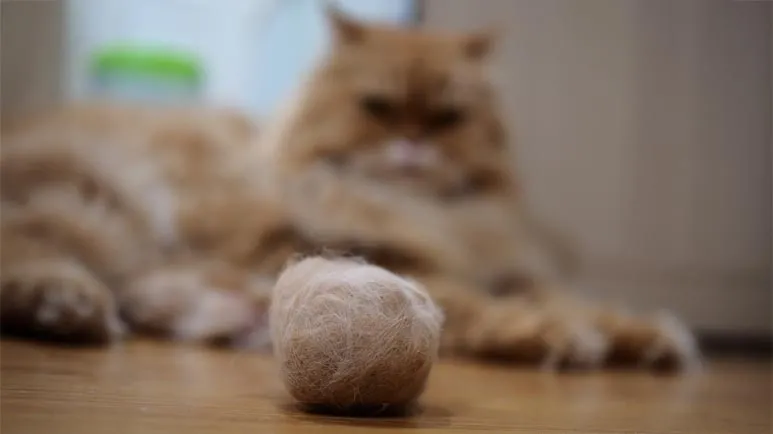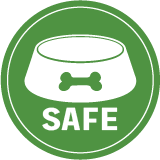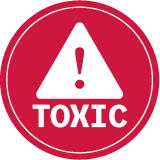Bad Advice for Hairballs, Avoid It for Your Pet's Well-Being
This much-talked-about solution isn't advisable for your pet, nor is it even effective, according to this study. Why hairballs may actually be a sign of disease or a result of two other conditions.

STORY AT-A-GLANCE
- If you’re hearing or reading that beets or beet pulp is the remedy for cat hairballs, you should ignore this ill-advised recommendation
- Hairballs are common but not normal, so a cat who is producing them regularly should be seen by a veterinarian to rule out an underlying GI disease
- Barring an underlying disease process, most cats with hairballs are ingesting too much hair for some reason or are eating a moisture-deficient diet
- Help for cats with hairballs includes a moisture-rich species-appropriate diet, digestive enzymes and omega-3 supplements, and added fiber such as psyllium seed husk power or 100% canned pumpkin
- You can also consider a petroleum-free hairball remedy or a dab of coconut oil on kitty’s paw; also be sure to brush or comb your cat to help remove hair and debris
Editor's Note: This article is a reprint. It was originally published June 5, 2018.
A troubling article headline was encountered recently: "If You Want Your Cat to Poop Out More Hairballs, Try Feeding It Beets." The article referenced a study published in the Journal of Animal Physiology and Animal Nutrition in which beet pulp was added to kibble to see if it would reduce hairball formation in short-haired cats.
There's so much wrong with this it's hard to know where to start. If your cat is producing a lot of hairballs, the first thing she needs is a veterinary exam — not something to make her poop more.
Wild cats also don't have hairball issues, which is why recurrent hairballs in housecats is a sign that something is wrong. There's no need to panic, but it would be best to investigate what's going on with a kitty who is regularly coughing up (or pooping) hairballs.
Secondly, the study results showed that while the cats pooped more and food moved through their digestive tracts faster, the beet pulp didn't reduce either the amount or size of hairballs in their feces.
Since the goal of the study was to determine if beet pulp reduced the formation of hairballs, and the study results showed it did not, we call this a fail. Why the author of the article with the silly headline took the study results and used them to advise people to feed their cats beets is beyond me.
Beet pulp is a byproduct of sugar beet processing, and is one of several types of inexpensive plant fibers, such as buckwheat and other grain hulls, fruit pectin, guar gum, oat and other brans, peanut shells, psyllium, tomato pomace and powdered cellulose, that are added to dry and canned pet foods. And while cats need fiber, beet pulp is a cheap filler/fiber/prebiotic, and you should never recommend buying pet food that contains it.
But back to the subject of kitties and hairballs. It's important for cat parents to realize that hairballs (scientific name, trichobezoars) are a red flag if little Tiger or Fluffy is producing them regularly.
Hairballs Aren't 'Normal' for Cats
While hairballs in housecats are very common, you may be surprised to learn they aren't a normal part of a feline's digestive process. Your cat's digestive tract is built to handle a certain amount of fur — the fur she pulls off herself during grooming, as well as the hair attached to prey in the wild.
But indoor-only cats in particular develop hairballs due to hair length, shedding patterns (spring is often hairball season for cats whose coats thin out as the weather warms up), over-grooming (of themselves or other cats in the household), deficiencies in the diet, digestive dysfunction or a combination of issues.
When one or more of these situations occurs, the hair your kitty has ingested forms a mass in her stomach that can't pass easily into the intestines. Her body knows it must rid itself of the foreign object, which is why hairballs are often thrown up rather than deposited in the litterbox.
Why Cats Get Hairballs
Most cases of hairballs are the result of one or more of the following: too much ingested hair, a moisture-deficient diet (or other issues with biologically inappropriate foods) or a problem in the gastrointestinal (GI) tract. Long-haired cats tend to have more hairball issues than kitties with shorter coats simply because they have more hair.
Skin conditions caused by allergies, infections or parasites can cause excessive shedding or over-grooming. Excessive grooming, also called psychogenic alopecia, is a compulsive disorder in cats that can result in tremendous quantities of ingested hair.
Cats on dry food diets aren't getting anywhere near the moisture their organs need to function properly. And unlike dogs, kitties don't make up the deficiency by drinking lots of water. A GI tract that is moisture-depleted is less able to transport a hairball than the digestive tract of a well-hydrated cat eating a nutritionally balanced, species-appropriate diet.
Cats consuming "feed-grade" (not human-grade) diets are ingesting poor-quality ingredients that have been rendered or processed at extremely high temperatures, which dramatically impacts nutrient value.
Digestibility of poor-quality proteins used in "pet feed" is not measured, nor are the levels of toxic byproducts (such as AGEs or heterocyclic amines), pesticides (glyphosates) or GMOs, all which have been linked to impaired gut health and microbiome imbalances, experimentally.
A digestive tract compromised by an inflammatory condition like inflammatory bowel disease (IBD), parasites, foreign objects, cancer or another serious disorder may not be able to process even normal amounts of hair. A chronic hairball problem should be investigated by your veterinarian, since there could be an underlying disease requiring treatment.
Once in a great while, a hairball can grow large enough to be life-threatening and require surgical removal. If you're not seeing hairballs but your cat is exhibiting all the usual hairball-related noises and behaviors, you should get her to your vet right away, as it's possible a hairball has grown too big to be regurgitated or passed through the GI tract.
It could also be a non-hairball related but serious condition like feline asthma. If your cat vomits frequently, stops eating, loses weight or shows other symptoms of being ill or in pain, it's also time to get her to the vet. Again, it could be an impassable hairball, but those symptoms can also signal other serious conditions.
Six Recommendations to Reduce or Eliminate Hairballs
- Feed a moisture-rich, nutritionally balanced, species-appropriate diet made with excellent-quality raw ingredients — If your cat is eating exclusively dry food and you can't or aren't willing to switch to a different diet, add bone broth to her kibble.
- Add a high-quality digestive enzyme supplement to your cat's diet — Cats in the wild consume raw food, which contains natural enzymes not found in highly processed, commercial "cat food."
- Add an omega-3 supplement such as krill oil — Sufficient omega-3 fatty acids in the diet can help improve the condition of your cat's skin and fur, as well as the ability of his digestive system to manage the hair and debris he swallows while grooming himself.
- Add a fiber source to your cat's meals — Mix the contents of a capsule of psyllium seed husk powder with a tablespoon of water and stir it into the food, or add a pinch of coconut fiber to each meal, or try a teaspoon of 100% canned pumpkin or freshly cooked mashed pumpkin.
- Never use petroleum jelly or mineral oil for hairballs — If you must use medication to assist with the passage of hair, use a petroleum-free hairball remedy (look for an all-natural product made with slippery elm, marshmallow or papaya) or a dab of coconut oil on your cat's front paw or near her bowl. Try giving fiber and coconut oil together.
Kibble-fed cats, in particular, need additional GI lubrication to help ingested hair pass through the digestive tract. - Brush or comb your cat — Set a goal of five minutes a day with a long-haired cat, and three to four times a week for a kitty with short hair. You should notice a very quick improvement in the hairball situation, and regular brushing or combing will also help improve the condition of your pet's skin by removing debris and dead cells.











